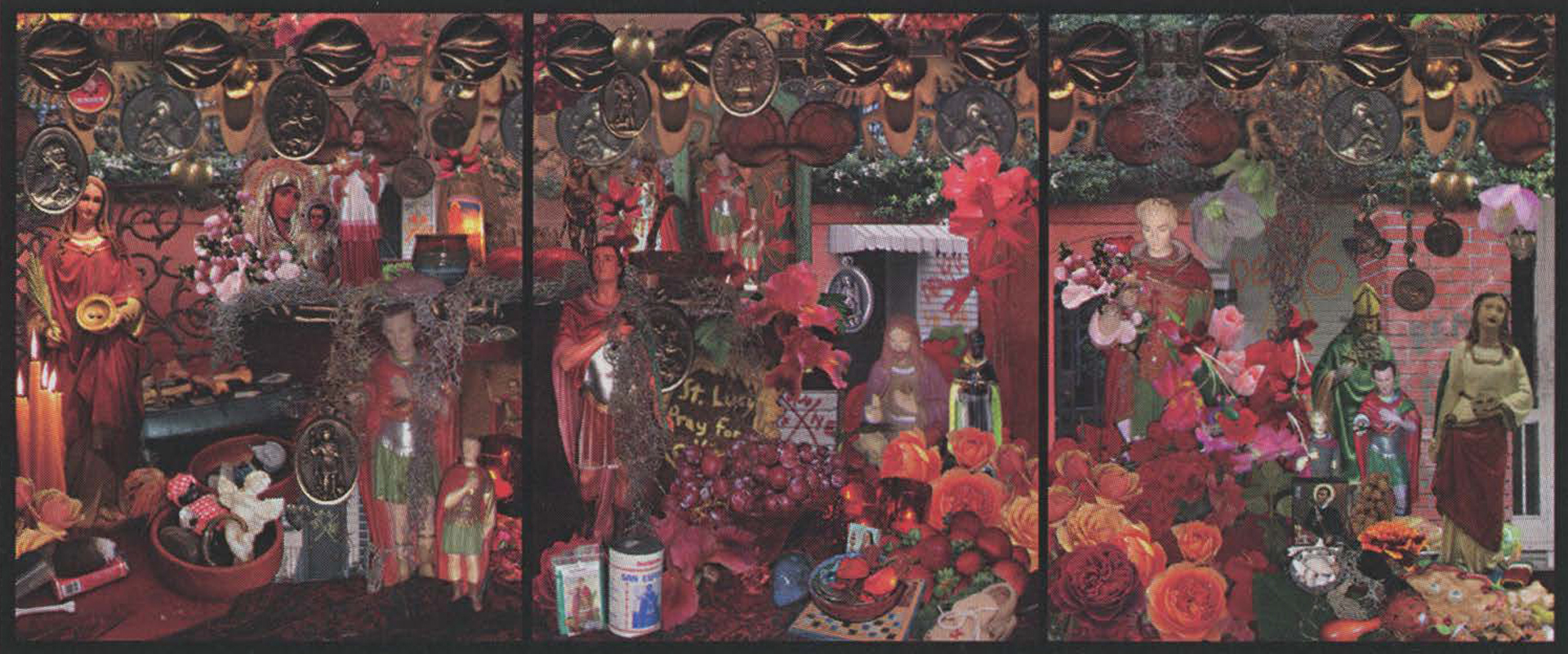Anna Maria Chupa: Nou La
Artist(s):
Title:
- Nou La
Exhibition:
Creation Year:
- 2007
Category:
Artist Statement:
Nou La combines imagery from two religious traditions in New Orleans with documentary photography of the Ninth Ward shot seven months after the 2005 hurricane season. The altar imagery is based upon transformations of two traditions: African Vodun in New Orleans,
specifically Priestess Miriam’s New Orleans Voodoo Spiritual Temple, and the Italian American celebration of St. Joseph’s feast day. The St. Joseph’s Day altar tradition was brought to New Orleans by Sicilian immigrants. It celebrates gratitude for St. Joseph’s intercession during a famine. These public altars are open to the public on St. Joseph’s feast day (March 19) and focus on distributing food to the poor.The 2006 feast day also marked the third anniversary of the invasion of Iraq, when the Veterans and Hurricane Survivors March from Mobile to New Orleans passed through the Ninth Ward. Montages in the installation (Expedite, Oya, Obatala, St. Lucy, Erzulie Dantor) invoke intercession for protection against hurricanes (Oya, Dantor), protection for children, calm in the midst of chaos (Obatala), action on behalf of those least empowered (Expedite), and protection for the poor (St. Lucy). A statue of St. Expedite in the church of Guadalupe, originally the mortuary chapel for the famed St. Louis Cemetery Number 1, is an apt symbol for the many community-action organizations in evidence during St. Joseph’s weekend 2006. He is the patron saint of prompt solutions to problems. The fabric, ribbon and Expedite-stamped fringe on the installation borrows from similar flag and fringe traditions seen in Vodun altars. The waving fringe activates ashe, the sacred power to enable healing transformations.
Technical Information:
Nou La references a SIGGRAPH 96 installation, photography of 12 St. Joseph’s Day altars, and four Vodun altars taken over a 10-year period, and recombines all of these with imagery from a visit in March following the 2005 hurricane season. The primary medium of the St. Joseph altar is food. Vodun altars are set apart from each other by fabric draperies, hence the use of fabric here. Images of saints with the symbols specific to the loa (spirits) are combined with food and coded offerings.The altars are reinterpreted as montages that include the St. Expedite and Obatala lenticular prints and the St. Lucy image printed with acid dyes on Habotai 10-millimeter silk. Two additional composite saints’ images date from the 1996 Altar installation. All of the Ninth Ward shots and most of the New Orleans altar shots are presented with minimal manipulation (cropping, exposure correction). The remaining still images are printed on matte paper and overlap one another in the installation at varying depths from the wall (from flush to two inches). The succession of images in the monitor is organized as a screensaver. At some points, only details are presented, and at other points, the monitor presents a wider-angle view.





